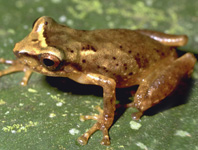Abstract
The genus Empoasca comprises more than 600 species, many of them important pests of cultivated plants. The leafhopper Empoasca fabalis DeLong, 1930 is native to the tropical and subtropical regions of America. From here, it has successfully spread to most regions of the continent. Today its range extends from the southern United States, through Central America, and the West Indies to southern South America (Cusipuma & Sanchez 1993, DeLong 1930, Paradell et al. 1990, Poos & Wheeler 1949, Wolcott, 1948). Outside its native area, the species was more recently recorded in the Canary Islands (Lorenzo & Hermoso de Mendonza 2000) and Hawaii (Dietrich & Perreira 2019). Although it is still not known to occur in the European mainland, specimens were collected in 2000 on the island of La Palma (Spain) (Lorenzo & Hermoso de Mendonza, 2000). Until now, it was unknown on the island of Madeira and Portugal.
References
Aguin-Pombo, D., Kuznetsova, V.G. & Freitas, N. (2006) Multiple parthenoforms of Empoasca leafhoppers from Madeira Island: Where are these unisexual forms coming from? Journal of Heredity, 97, 171–176.
https://doi.org/10.1093/jhered/esj021
Aguin-Pombo, D., Valido, L., Sousa, F. & Arraiol, A. (2014) Differences in wing venation between parthenogenetic and bisexual species of Empoasca leafhoppers from Madeira Island. Bulletin of Insectology, 67 (1), 1–12.
Alam, M.M. & Gibbs, I.H. (1984) Defoliators and sap sucking insects of pigeon-pea in Barbados, West Indies. In: 20th Annual Meeting, 21–26 October 1984, Caribbean Food Crops Society, St. Croix, U.S. Virgin Islands, No. 1975-2017-3479.
Childers, N. & Winters, H.F. (1947) Food crop investigations. Vegetable investigations. Report of The Puerto Rico Experiment Station, 1946, 23–26.
Cusipuma, R.M. & Sanchez, V.G. (1993) Biologia de Empoasca fabalis De Long Homoptera Cicadellidae. Revista Peruana de Entomologia, 35, 133–136.
Decker, G.C. & Maddox, J.V. (1967) Cold-hardiness of Empoasca fabae and some related species. Journal of Economic Entomology, 60 (6), 1641–1645.
https://doi.org/10.1093/jee/60.6.1641
Dietrich, C.H. & Perreira, W.D. (2019) Eight leafhoppers (Hemiptera: Cicadellidae) newly recorded from Hawaii, including a new species. Annals of the Entomological Society of America, 112 (3), 281–287.
https://doi.org/10.1093/aesa/saz004
DeLong, D.M. (1930) A new species of bean leafhopper from Haiti. The Canadian Entomologist, 62, 92–93.
https://doi.org/10.4039/Ent6292-4
Instituto Nacional de Estatística (INE) (2019) Estatíticas agrícolas 2018. Instituto Nacional de Estatística, Lisboa, 168 pp.
Langlitz, H.O. (1964) The economic species of Empoasca in the coastal and Sierra regions of Peru (Homoptera: Cicadellidae). Revista Peruana de Entomología, Agricola, 7 (1), 54–70.
Lorenzo, J.M. & Hermoso de Mendonza, A. (2000) Presencia de la especie americana Empoasca fabalis DeLong, 1930 (Hemiptera, Cicadellidae) en la isla Canaria de La Palma. Boletín de la Asociación española de Entomología, 24 (1–2), 267.
Lorenzo Fernández, J.M. (2003) Aportación al conocimiento de la dinámica poblacional de Empoasca fabalis DeLong (Homoptera: Cicadellidae) sobre Ipomoea batatas (L.) Poir en la Isla de la Palma-Islas Canarias-España, en condiciones de campo. Phytoma, 154, 28–31.
Paradell, S., Virla, E. & Maragliano, R. (1990) Descripcion de Empoasca fabalis de Long, 1930 Cicadellidae-Thyphlocibinae, un homoptero abundante sobre plantas de Ipomoea spp. en la provincia de Buenos Aires. Revista de la Asociacion de Ciencias Naturales del Litoral, 212, 117–127.
https://doi.org/10.14409/natura.v2i21.3596
Peña, J.E., Sharp, J.L. & Wysoki, M. (Eds.) (2002) Tropical fruit pests and pollinators: biology, economic importance, natural enemies, and control. CABI, Cromwell Press, Trowbridge, 430 pp.
https://doi.org/10.1079/9780851994345.0000
Poos, F.W. & Wheeler, N.H. (1949) Some additional host plants of three species of leafhoppers of the genus Empoasca. Proceedings of the Entomological Society of Washington, 51 (1), 35–38.
Puerto Rico Agricultural Experimental Station (1940) Studies of lima bean leafhoppers In: Report of The Puerto Rico Experiment Station, 1939. United States Department of Agricultura, Washington, pp. 59–62.
Ramírez-García, L.M., Brunner, B., Armstrong, A., Pantoja, A. & Davis, M. (1999) La papaya como nuevo hospedero de Empoasca fabalis en Puerto Rico. Journal of Agriculture of the University of Puerto Rico, 83 (1–2), 79–82.
Smith, R.C. & Barker, H.D. (1930) Observations on the “yellows” disease of beans and related plants in Haiti. Journal of Economic Entomology, 23 (5), 842–847.
https://doi.org/10.1093/jee/23.5.842
Squire, F.A. (1972) Entomological problems in Bolivia. PANS Pest Articles & News Summaries, 18 (3), 249–268.
https://doi.org/10.1080/09670877209411802
Wolcott, G.N. (1948) The insects of Puerto Rico. Journal of the Agricultural University of Puerto Rico, 32, 101–145.

